Jeju Holic Museum (제주홀릭뮤지엄)
12.4Km 2024-07-24
2835 Pyeonghwa-ro, Aewol-eup, Jeju-si, Jeju-do
Jeju Holic Museum is located in what used to be a senior care facility that closed down. The museum tells the story of Jeju through five different spaces, using unique and modern ways of storytelling.
Noeully (노을리)
12.5Km 2024-01-31
656 Aewolhaean-ro, Jeju-si, Jeju-do
Noeully is a dessert café located in Gueom-ri, Aewol-eup, Jeju-si. The entrance and interior are decorated like a bus stop and a glass greenhouse, respectively, allowing visitors to enjoy tropical plants and the ocean view. It consists of a rooftop café on the second floor and a sky garden on the third floor, as a no-kids zone except on the first floor. Chairs and tables face the sea for an open view of the Jeju sea and sunset, making this café a popular spot to visit for taking photos to post on social media. One of the charms of Noeully is that visitors can enjoy flowers here all year round, such as mustard flowers, hydrangeas, sunflowers, cosmos, and buckwheat flowers. The representative menu item is Briquette bread, a briquette-shaped glutinous rice bread filled with strawberry jam. In addition, the menu includes a variety of drinks, coffee, scones, and cookies.
Hallasan Mountain [National Geopark] (한라산 (제주도 국가지질공원))
12.6Km 2024-12-03
2070-61 1100-ro, Jeju-si, Jeju-do
+82-64-710-3945
Hallasan Mountain stands proudly at the center of Jeju Island and is perhaps the island’s most memorable landmark. Also called Yeongjusan Mountain, meaning "mountain high enough to pull the galaxy," Hallasan Mountain is widely known by scientists for its geological value. Designated as a national park in 1970, there are 368 parasitic cones called "oreum" (Jeju dialect meaning peak) around the main mountain.
Hallasan Mountain is famous for its vertical ecosystem of plants that results from the varying temperatures along the mountainside. Over 1,800 kinds of plants and 4,000 species of animals (3,300 species of insects) have been identified; to explore the mountain's treasures, simply follow one of the well-developed hiking trails.
Hallasan Mountain Trekking (한라산 트레킹)
12.6Km 2020-06-25
2070-61, 1100-ro, Jeju-si, Jeju-do
+82-64-740-6000
Situated on the southern tip of the Korean Peninsula, Hallasan is 1,950 meters in x_height and is the highest mountain in South Korea. Formed from volcanic activity, the mountain is a dormant volcano made mostly of basalt. Home to the magnificent Baekrokdam (lake-filled crater), the mountainside is covered with alpine flora and lush trees.
The mountain is characterized by majestic cliffs, steep slopes, interesting rock formations, and, in particular, myriads of colorful azaleas. There are over 360 small mountains (uniquely-shaped volcanic mountains called “Oreum” in Jeju dialect) surrounding Halla Mountain that offer new delights to visitors with the coming of each new season. Along with Hallasan, the oreums were officially named the Hallasan Natural Protection Area (Natural Monument No.12) in 1966.
There are six hiking trails along Hallasan. Seongpanak Trail on the east and Gwaneumsa Trail in the north go all the way up to the summit (Baekrokdam). Those looking for a less rigorous hike are advised to take the shorter trails reaching midway up the mountain. All trails are relatively short (less than 10 kilometers) and can be hiked in less than a day. Visitors are advised, however, to start early in the morning if planning on hiking up to the summit and to check official operating hours, as some trails are only open during certain hours of the day. Keep reading for information on some of the most popular trails.
* Gwaneumsa Trail (North)—Summit Trail
Gwaneumsa Trail offers hikers the best view of Hallasan’s deep valleys and stunning terrain. Midway along the trail is Guringul (a lava cave) and Tamna Valley. Tamna Valley is especially beautiful during the fall when the leaves are changing and during the winter when the entire area lays under a dusting of snow.
* Seongpanak Trail (East)—Summit Trail
This relatively long, gently sloping trail is perfect for beginners. Lush broadleaf trees give shade from the beating sun and in spring the azaleas bloom and turn the mountainside into a dazzling array of color.
* Eorimok Trail (Northwest)
This short trail is another relatively easy trail for beginners. In spring, the nearby meadows are adorned with red royal azaleas. From the stone pathway to Mansedongsan visitors can catch a breathtaking panoramic view of the countryside and the island’s signature Oreums.
* Yeongsil Trail (Southwest)
As the shortest trail in Hallasan, this trail boasts Yeongsilgiam (a spectacular cliff with series of unusual rock formations). It is covered with azaleas and royal azaleas in spring and vibrant autumn foliage starting in October.
Jeju Island Special Tourist Zone (제주도 관광특구)
12.6Km 2025-05-20
Jeju-do
+82-64-740-6000
Located to the southwest of the Korean Peninsula, the island of Jeju is Korea's largest tourist destination. The entire island has been designated as a special tourist zone, and it's easy to see why: there is hardly any spot on the island that is not photogenic. Unlike mainland Korea, which has a temperate climate, Jeju boasts a climate that is closer to subtropical. Hallasan Mountain, lying at the center of the island, is surrounded by 368 parasitic cones, known as "Oreum." Eleven beaches have been designated as tourist beaches, but including those that are not officially designated, the island features nearly thirty beaches in total. Famous beaches include Iho Tewoo Beach, Samyang Beach, Hyeopjae Beach, Geumneung Beach, and Gwakji Beach. Jeju's renowned Olle Trails, a system of hiking paths, span a total length of 425 kilometers and would take about fifteen days to complete in their entirety.
Café Gwangnyeong Olle 17 (카페광령올레17)
12.7Km 2024-02-20
295 Gwangseong-ro, Aewol-eup, Jeju-si, Jeju-do
Café Gwangnyeong Olle 17 is located in front of the Gwangnyeong 1-ri office, marking the end point of Jeju Olle Trail 16 and the starting point of Trail 17. Run by a photographer, the café features a photo printing machine on-site. The signature menu item is handmade milk tea, complemented by a selection of coffee and other beverages. This café offers visitors a cozy atmosphere that captures the warmth and charm of a small town in Jeju.
Jeju Eco Suites [Korea Quality] / 제주에코스위츠 [한국관광 품질인증]
12.9Km 2024-07-30
207-13 , Jungmunsang-ro, Seogwipo-si, Jeju-do
+82-64-738-9975
Jeju Eco Suites is an eco-friendly pension located in Seogwipo, Jeju-do. Guestrooms include deluxe suites, jacuzzi suites and private spa villas, and each room has a wide terrace and a kitchen. Dogs are allowed, and there are toys for children in the lobby. A barbecue grill, laundry service and breakfast (for 2 nights or more) are provided free of charge. During the winter season, you can experience tangerine picking in the garden. Jungmun Tourism Complex and Jungmun Saekdal Beach are 10 minutes away by car.
Samwonjeong Jungmun (삼원정 중문본점)
13.0Km 2024-03-20
44 Saekdaljungang-ro, Seogwipo-si, Jeju-do
This restaurant near Jeju Jungmun Resort specializes in cutlassfish dishes made with fresh cutlassfish delivered every morning. A popular menu is the Braised Seafood and Whole Cutlassfish, which features a whole cutlassfish braised in a long pot with whole octopus, live abalone, and red-banded lobster. Side dishes include steamed pork slices, mung bean pancakes, and fermented whole anchovies. Rice is served with sea urchin and seaweed soup, with cinnamon punch for dessert. Nearby sights include Jungmun Saekdal Beach and Cheonjeyeonpokpo Falls.
Seogwipo Yerae Ecological Village (서귀포 예래생태마을)
13.1Km 2020-02-07
82, Yerae-ro, Seogwipo-si, Jeju-do
+82-64-738-6613
Yaerae Village encompasses a beautiful natural landscape, prime seaside location in Jeju, and cultural and historic sites spread throughout the area. Located between valleys near Jungmun Resort, considered one of Korea’s greatest tourism complexes, the village retains its traditional way of life. Village residents value environmental awareness, placing an importance on educating youth to preserve both the local customs and the village’s natural surroundings. Villagers encourage a sense of community through engaging in environment-related activities.
Gueom Port (구엄포구)
13.1Km 2022-06-09
607-5, Gueom-ri, Jeju-si, Jeju
Near Aewol's coastal road, a beautiful sunset spot, there is the small and quaint Gueom Port. Next to the port, there is a rock saltern. This is where salt was produced on top of the basalt. The beautiful coastal road along the rock saltern was designated as a coastal path. There is also a small lighthouse for fishermen returning from sea at night.

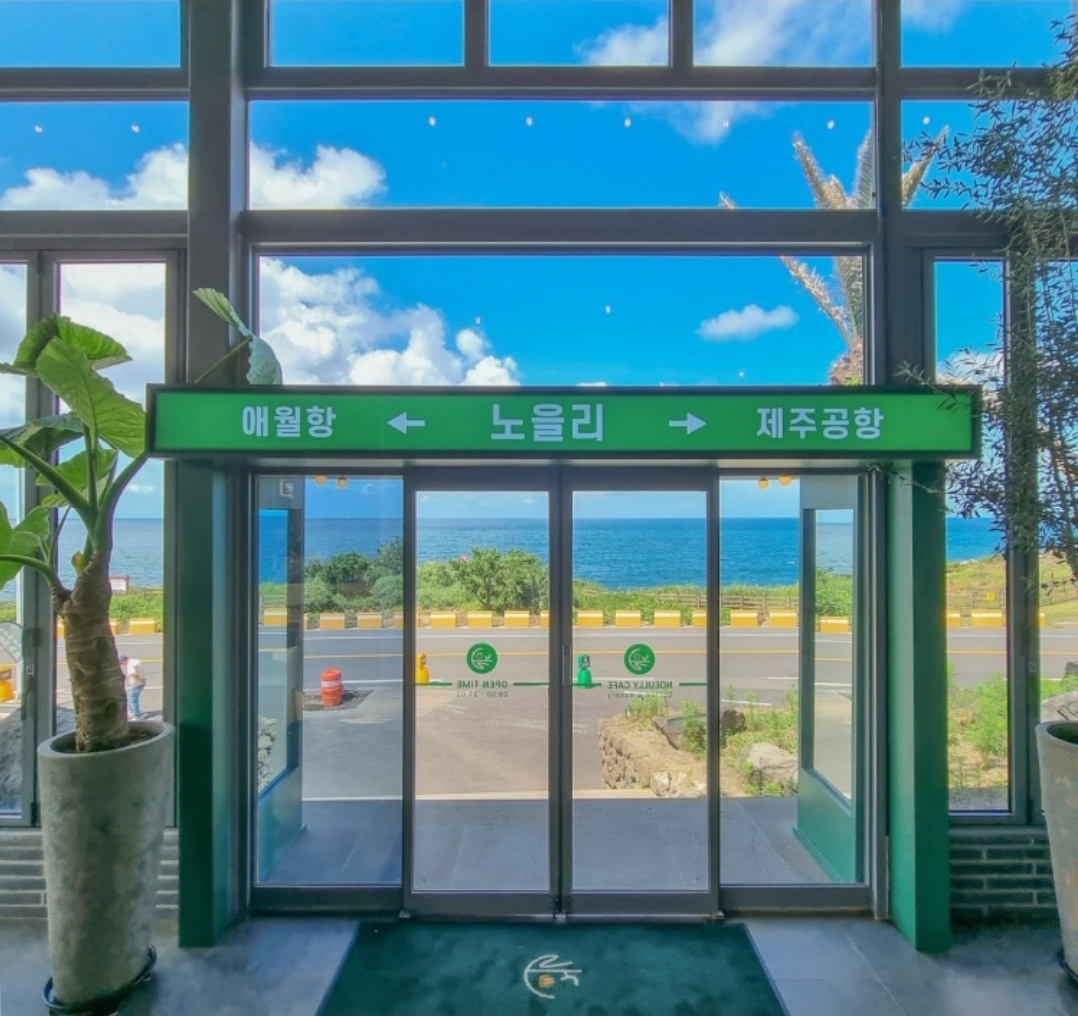
![Hallasan Mountain [National Geopark] (한라산 (제주도 국가지질공원))](http://tong.visitkorea.or.kr/cms/resource/98/2870098_image2_1.jpg)
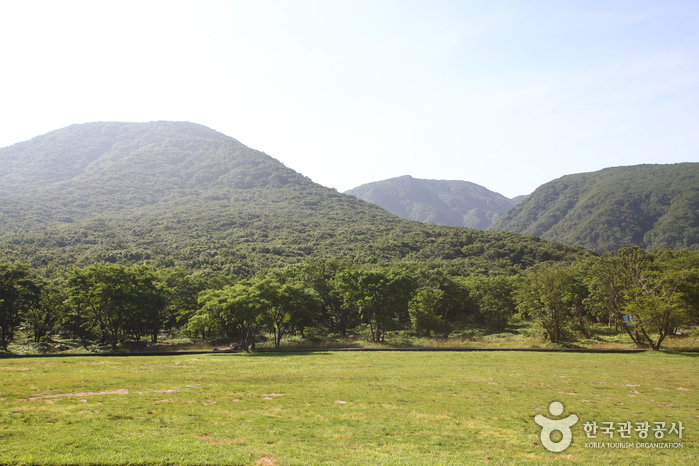
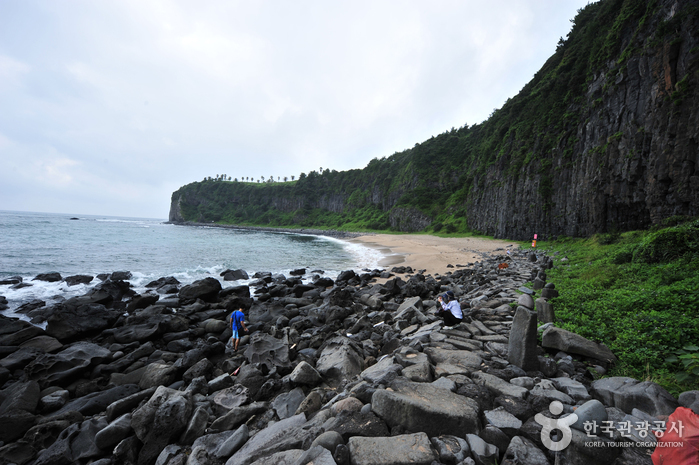
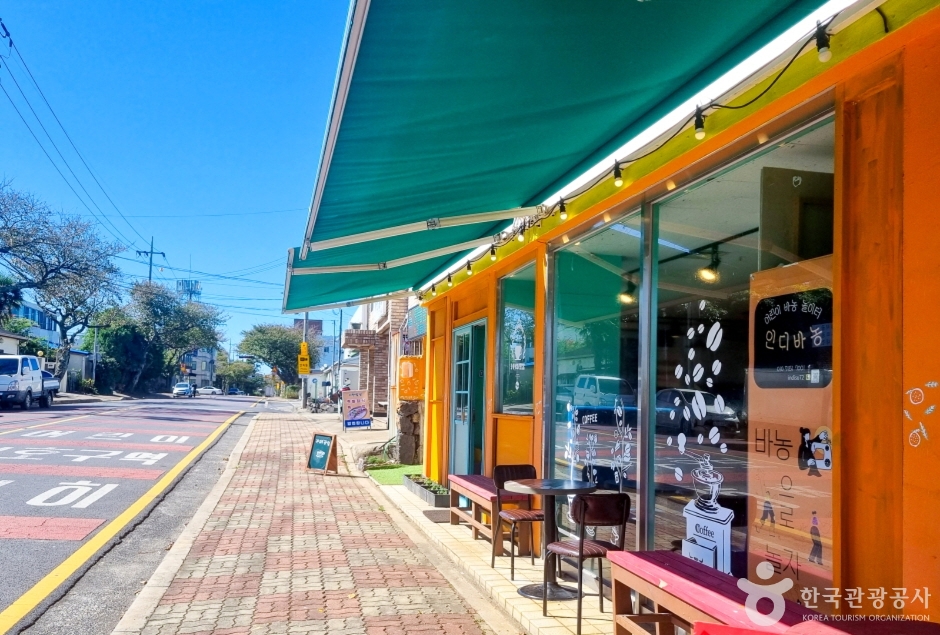
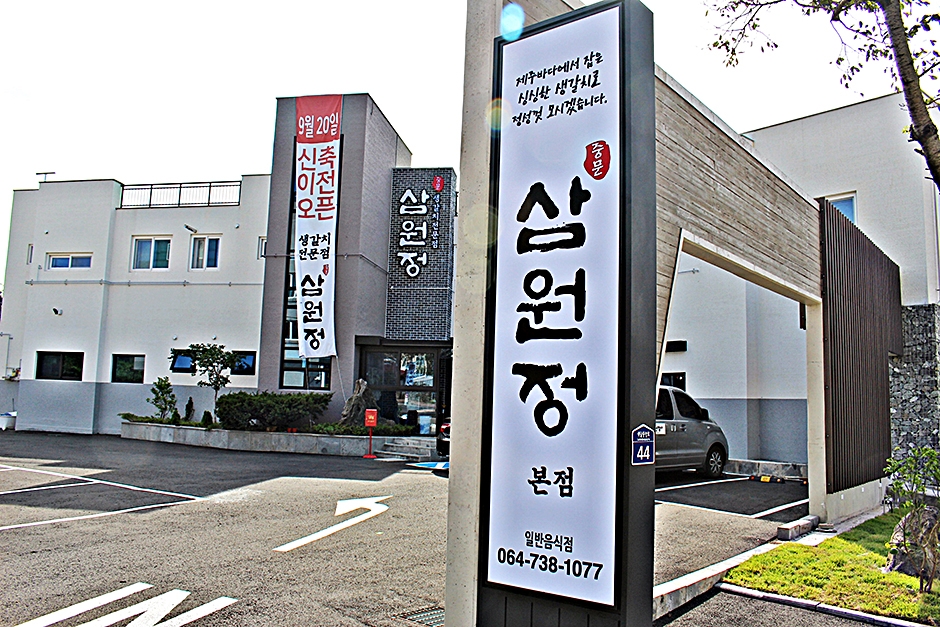
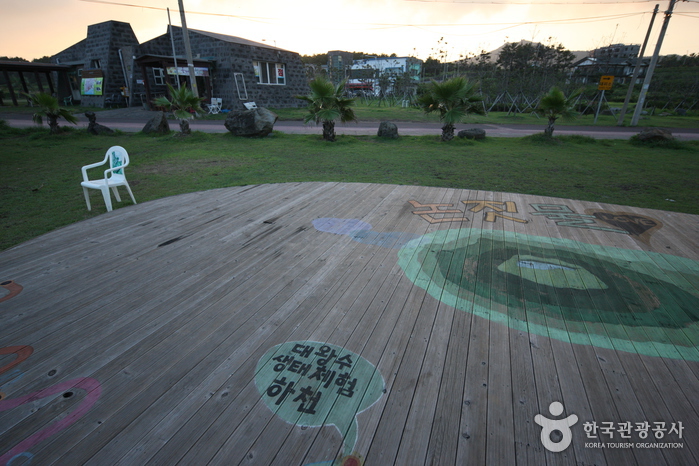
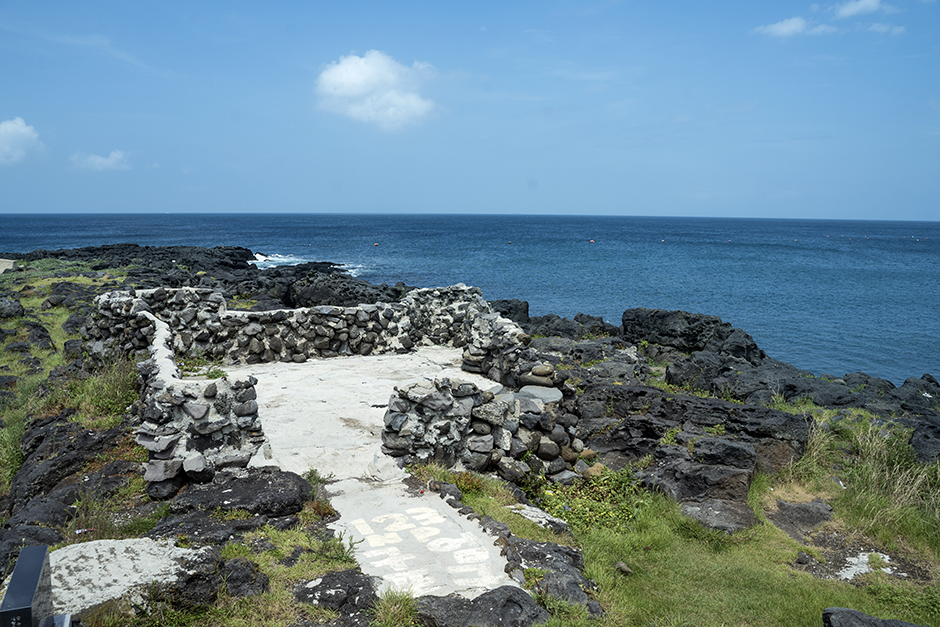
 English
English
 한국어
한국어 日本語
日本語 中文(简体)
中文(简体) Deutsch
Deutsch Français
Français Español
Español Русский
Русский